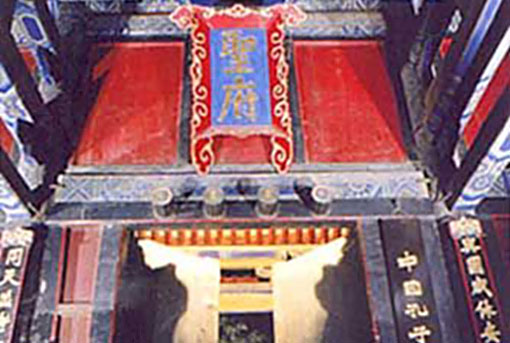Confucius Mansions
Confucius Mansions
Next door to Confucius Temple is the Confucius Mansions, which dates from the 16th century (Ming dynasty), with more recent renovations. The Confucius’ Mansion was built in the first year of Kaibao in Song Dynasty in 1038. It is a noble manor combined the typical government with inner house in Chinese feudal society. With an area of more than 240 mu, the place is a maze of 450 halls, rooms, buildings and side passages, and getting around requires a compass. The Confucius’ Mansion is also called "Yansheng Master Mansion". It is the living place of closely related descendants generation after generation. It is the largest popular mansion next to the imperial palaces of Ming and Qing Dynasty in China. No matter the construction layout or the collection of cultural relics all claim "the first mansion in the world"
The Confucius Mansions is the most sumptuous aristocratic lodgings in China, which is indicative of the Kong family’s former great power. From the Han to the Qing dynasties, the descendants of Confucius were ennobled and granted privileges by the emperors. They lived like kings themselves, with 180-course meals, servants and consorts. Confucius even picked up some posthumous honours.

Qufu grew around the Confucius Mansions and was an autonomous estate administered by the Kongs who had powers. Emperors could have a visit – the Ceremonial Gate near the south entrance was opened only for this event. Because of this royal protection, huge quantities of furniture, ceramics, artefacts, customary and personal effects survived and some may be viewed. The Kong family archives are a rich legacy and also survived.

The Confucius Mansions is built on an ‘interrupted’ north-to-south axis. Grouped by the south gate are the former administrative offices (taxes, edicts, rites, registration and examination halls).To the north on the axis is the Neizhai Gate (Neizhai Men), a special gate that seals off the residential quarters (used for weddings, banquets and private functions). East of the Neizhai Gate is the Tower of Refuge, where the Kong clan could gather if the peasants turned nasty. It has an iron-lined ceiling on the ground floor, and a removable staircase to the 1st floor. Grouped to the west of the main axis are former recreational facilities (studies, guestrooms, libraries and small temples). To the east is the odd kitchen, ancestral temple and the family branch apartments. Far to the north is a spacious garden with rockeries, ponds and bamboo groves. Kong Decheng, the last of the family line, lived in the Confucius Mansions until 1948, when he hightailed it to Taiwan.
As the border of inner house, front is the government having three halls and six main rooms (the Largest Hall, the Second Largest Hall, the Third Largest Hall, the Guangou Main Room, the Baihu Main Room, the Zhiyin Main Room, the Zhangshu Main Room, the Dianji Main Room and the Sile Main Room), back is the inner house, there are front up house, front hall building, back hall building and back five rooms. The backyard is the garden of Confucius’ Mansion, it is the place that the successive Yansheng Masters and family members had a rest, chatted and enjoyed themselves. The flowers and trees are all cultivated meticulously. The surroundings of the backyard are very beautiful and scenery is graceful. The Kong Family Mansion is the largest of its kind in Chinese history. In 1994, the Mansion, the Cemetery of Confucius and the Temple of Confucius were listed as World Cultural Heritage buildings. ticipant!
|



